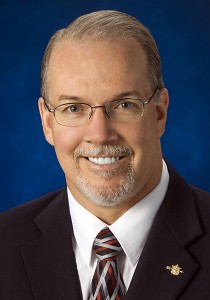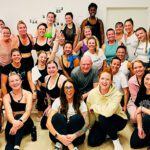Home »

K-12 students to have optional in-class instruction June 1
Parents will have the choice of bringing their children (in K-12) back to class on a part-time basis this school year (June 1) as part of BC’s Restart Plan, with the goal of returning to full-time classes in September, provided it is safe to do so, states a May 15 joint Office of the Premier, Ministry of Education and Ministry of Children and Family Development media release.

“British Columbians have worked hard to flatten our curve. As we move into the next phase of our pandemic plan after the May long weekend, the science shows us that we’re ready to bring students back to school safely on a gradual and part-time basis,” said Premier John Horgan. “This will be welcome news for many families who have struggled to adjust to remote and online learning, and for parents who are going back to work. At every step, we will move slowly and make health and safety our top priority. B.C. has done well under the guidance of our provincial health officials, and now is the time to take this next step together.”
To make sure schools are safe for students and staff, the number of students in school each day will be reduced, with most receiving in-class instruction part time.
School districts will determine scheduling for classes and transportation arrangements. For kindergarten to Grade 5, this means most students will go to school half time (such as alternating days), while grades 6 to 12 will go to school about one day a week. Children of essential service workers and students needing additional supports will have the option to attend school full time.
Families that decide not to send their children to class may continue learning from home.
“School is the place where kids learn how to connect with others and grow together, and it’s incredibly important for students who need extra support to get more time with their teachers and support workers,” said Rob Fleming, Minister of Education. “We’ve looked at what measures other jurisdictions are putting in place and we’re taking direction from our provincial health officials, so students, educators and staff know we’re taking every precaution to protect their health and safety.”
All boards of education and independent school authorities will be required to implement strict provincial health officer and WorkSafeBC health and safety measures to reduce the risk COVID-19 transmission, including:
* desks spaced apart and avoiding groups or gatherings of students in hallways or other common areas;
* regular cleaning of high-contact surfaces like door knobs, toilet seats, keyboards and desks at least twice a day, and cleaning the school building at least once a day;
* students, educators and staff will be required to clean their hands before entering school property, and there will be more hand-sanitizing and cleaning stations available, with well-stocked supplies;
* staggered drop-offs, lunch and recess breaks, with increased outside time;
* staff and students (or their parents/guardians) must assess themselves daily for symptoms of COVID-19. If any student or staff member has even mild symptoms, arrangements will be made for that person to be returned home;
* one student per seat on school buses, unless children are from the same house, with plexiglass separating the bus driver from students; and
* students or employees should not share food or personal items like phones, pens or pencils. Clear protocols also need to be in place for the safe and healthy handling of all food items.
The Ministry of Education has developed a five-stage approach to operate schools, depending on risk of transmission. Schools will also have plans in place for each stage, ensuring they are ready to make changes if there is a risk of transmission, a second wave or a community outbreak.
Each school district and independent school must have its return-to-class and safety plans approved by the ministry before moving to the next stage. The plans will be posted on each district’s website for families to access. The ministry will support boards of education and independent school authorities in building these plans, and operations during the pandemic will be regularly monitored.
Since returning to class is voluntary and most students will be attending part time, school leaders will contact families to make arrangements for children to return to in-class instruction. If parents have not heard from their schools by May 22, 2020, they are asked to contact their principal. Parents and caregivers are advised to follow the schedule provided for their child to ensure a safe and orderly restart.
Many child care centres have continued to operate safely throughout the COVID-19 pandemic to support essential service workers in communities across B.C.
Updated health and safety guidelines for child care settings released by the provincial health officer will support child care centres that were closed to reopen safely as they are able, and will reassure parents as they return to work that their children will be cared for in a safe environment.
Information from the BC Centre for Disease Control states the COVID-19 virus has a very low infection rate in children. As well, children are not the primary drivers of COVID-19 spread in child care facilities, schools or in community settings. Like schools, child care centres will need to take additional precautions to maintain the health and safety of their employees and the children they care for.
“We know that parents will continue to make the right child care decisions for their family, based on their individual circumstances, and providers will do the same for their centres and the child care professionals who work there,” said Katrina Chen, Minister of State for Child Care. “While we are giving the necessary tools to child care centres to operate safely, it is ultimately the choice of parents and providers.”
New provincial health officer’s guidelines for safely providing child care include:
* maintaining the physical space requirements set out in the Child Care Licensing Regulation. Child care centres have sufficient space to support physical distancing between staff without reducing the number of children in care at any one time.
* organizing children into smaller groups and/or spreading children out to minimize direct physical contact.
* cleaning and disinfecting frequently touched surfaces at least twice a day. General cleaning of the centre should occur at least once a day with common cleaning and disinfectant products.
* Setting up hand-hygiene stations at the entrance, so children can clean their hands when they enter. If a sink with soap and water is not available, provide hand sanitizer but keep out of children’s reach and supervise its use. Additional hand-hygiene opportunities should be built into the daily schedule.
* staggering the timings of pickup and drop-off. A daily check at drop-off may be conducted by asking parents and caregivers to confirm their child does not have symptoms of common cold, influenza, COVID-19 or other respiratory disease. There is no role for screening children or staff for specific symptoms, checking temperatures or COVID-19 testing. Such activities are reserved for health-care professionals.
* having children outside often, including for learning activities, snack time and play time.
* ensuring each child has their own individual meal or snack. Reusable utensils must be cleaned and sanitized after each use.
* asking parents and caregivers to only bring personal comfort items (e.g., stuffies) if they are clean and can be laundered at the end of each day.
These guidelines will be complemented by WorkSafeBC guidelines for child care providers, which will be released next week.
As B.C. takes steps towards a recovery by removing some of the restrictions, employers are encouraged to be flexible when it comes to arrangements for parents of school-age students.
The Ministry of Education is working with all 60 school districts, independent school authorities, First Nations schools, teachers, school leaders, support staff, public health officials and all its education partners to co-ordinate the next steps for accommodating more students in class.
“As we look to create our new normal, reopening our schools to in-class learning is an important step,” said Dr. Bonnie Henry, B.C.’s provincial health officer. “It will look different, but will be done in way that is safe for everyone. I want to assure all the staff, students and families that we will face the challenges that come with this transition together – and we will do it in a measured and thoughtful way.”
Stephanie Higginson, president of the BC School Trustees Association added: “Getting students back into classrooms is the best way to grow their learning and maintain their connections to friends, teachers, school staff and the wider community. In-class instruction also ensures that students who need extra support receive it. As we enter into our new normal, we must strive to have students in school buildings whenever it is safe to do so. All school plans will be based on the most up-to-date health and safety protocols to keep students, staff and families learning safely in every community in British Columbia.”
Andrea Sinclair, president of the BC Confederation of Parent Advisory Councils (BCCPAC) stated, “BCCPAC is certainly pleased that Premier Horgan has made the decision to reopen schools for all students in British Columbia. Parents are truly appreciative that a return to the classroom is voluntary and that while many parents will be sending their children back to their neighbourhood school, a significant number will continue with remote learning and re-evaluate as we head into the new school year. I have had numerous discussions with Minister Fleming and it is clear that the parents’ voice has been heard.”
“We recognize and honour the important work that front-line child care providers are doing through these unprecedented times and we commend government for providing temporary emergency funding to ensure that these critical services will be there to support our communities as schools reopen and B.C.’s recovery plan is rolled out,” said Sandra Menzer, chair, Provincial Child Care Council.
There are about 5,000 students already in classrooms, including children of essential service workers and those who require extra support.
Lead image: Mount Baker Secondary School library. e-KNOW file photo
e-KNOW







